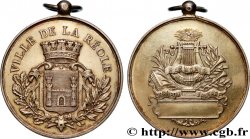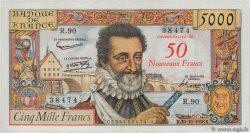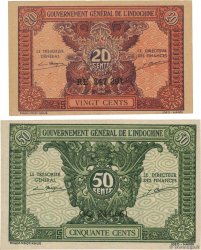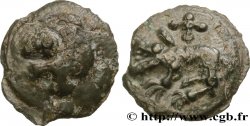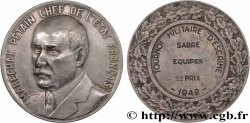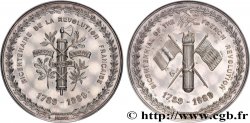fme_367848 - III REPUBLIC Médaille de Vincennes - Charles V et Saint-Louis
Not available.
Item sold on our e-shop (2018)
Price : 150.00 €
Item sold on our e-shop (2018)
Price : 150.00 €
Type : Médaille de Vincennes - Charles V et Saint-Louis
Date: n.d.
Mint name / Town : 94 - Vincennes
Metal : bronze
Diameter : 59 mm
Orientation dies : 12 h.
Engraver CROUZAT Léopold Georges (1904-1976)
Weight : 98 g.
Edge : lisse
Coments on the condition:
Intéressante médaille avec une belle patine et un petit coup sur tranche
Obverse
Obverse legend : VINCENNES / SAINTE CHAPELLE / CHARLES V / LE BOIS // LE DONJON.
Obverse description : Vue de la Sainte Chapelle, du Donjon et de Charles V en pied, avec la forêt dans le fond.
Reverse
Reverse legend : SAINT LOUIS ROI DE FRANCE / “MAINTES FOIS SE ACOSTOIOIT A UN CHENE..” / SUGGÉRANT LA JUSTICE / POUR APAISER LES / HOMMES.
Reverse description : Saint-Louis trônant et rendant justice avec trois sujets autour de lui.
Commentary
Léopold Georges Crouzat est un artiste peintre, graveur et médailleur français né à Castres le 27 mars 1904 et mort le 4 juin 1977 dans le département de l'Essonne.
Il fut l'élève de Paul Landowski à l'École nationale supérieure des beaux-arts. Sociétaire de la Société des artistes français, mention honorable en 1928, médaille d'argent en 1938. Médaille d'argent à l'Exposition spécialisée de 1937.
L'histoire de Vincennes est étroitement liée à l'histoire de son bois et de son château. Elle débute véritablement au XIIe siècle, lorsque Louis VII choisit la forêt de Vilcena comme terrain de chasse et y fait aménager un pavillon de chasse.
En 1373, alors que le château est encore en construction, Charles V fait aménager dans son prolongement, une basse-cour destinée aux logements des domestiques royaux. Au pied de celle-ci s'est développé le hameau de La Pissotte, un petit village situé au niveau de l'actuelle rue de Fontenay. En 1667, Basse-cour et Pissotte sont réunies en une même paroisse qui prend le nom de La Pissotte. En 1787, une réforme administrative installe une communauté d'habitants qui prend le nom de municipalité de Vincennes. Dans leur cahier de doléances de 1789, les Vincennois se plaignent de l'exiguïté du territoire. Durant la période révolutionnaire, Vincennes se voit attribuer 238 hectares comprenant le château et son jardin ainsi que le Petit-Parc et une partie du bois. Puis en 1829, une ordonnance royale détermine le nouveau territoire de la ville : 94 hectares, aux dépens de Montreuil et Fontenay-sous-Bois sont alloués à la commune..
Léopold Georges Crouzat was a French painter, engraver and medalist born in Castres on March 27, 1904 and died on June 4, 1977 in the Essonne department..
He was a student of Paul Landowski at the National School of Fine Arts.. Member of the Society of French Artists, honorable mention in 1928, silver medal in 1938. Silver Medal at the 1937 Specialized Exhibition.
The history of Vincennes is closely linked to the history of its woods and its castle. It truly began in the 12th century, when Louis VII chose the Vilcena forest as a hunting ground and had a hunting lodge built there..
In 1373, while the castle was still under construction, Charles V had a lower courtyard built in its extension for the royal servants' quarters.. At the foot of this hill, the hamlet of La Pissotte developed, a small village located at the level of the current rue de Fontenay.. In 1667, Basse-cour and Pissotte were united into a single parish which took the name of La Pissotte. In 1787, an administrative reform established a community of inhabitants which took the name of the municipality of Vincennes. In their list of grievances of 1789, the people of Vincennes complained about the small size of the territory. During the revolutionary period, Vincennes was allocated 238 hectares including the château and its garden as well as the Petit-Parc and part of the woods. Then in 1829, a royal ordinance determined the new territory of the town: 94 hectares, at the expense of Montreuil and Fontenay-sous-Bois, were allocated to the commune..
Il fut l'élève de Paul Landowski à l'École nationale supérieure des beaux-arts. Sociétaire de la Société des artistes français, mention honorable en 1928, médaille d'argent en 1938. Médaille d'argent à l'Exposition spécialisée de 1937.
L'histoire de Vincennes est étroitement liée à l'histoire de son bois et de son château. Elle débute véritablement au XIIe siècle, lorsque Louis VII choisit la forêt de Vilcena comme terrain de chasse et y fait aménager un pavillon de chasse.
En 1373, alors que le château est encore en construction, Charles V fait aménager dans son prolongement, une basse-cour destinée aux logements des domestiques royaux. Au pied de celle-ci s'est développé le hameau de La Pissotte, un petit village situé au niveau de l'actuelle rue de Fontenay. En 1667, Basse-cour et Pissotte sont réunies en une même paroisse qui prend le nom de La Pissotte. En 1787, une réforme administrative installe une communauté d'habitants qui prend le nom de municipalité de Vincennes. Dans leur cahier de doléances de 1789, les Vincennois se plaignent de l'exiguïté du territoire. Durant la période révolutionnaire, Vincennes se voit attribuer 238 hectares comprenant le château et son jardin ainsi que le Petit-Parc et une partie du bois. Puis en 1829, une ordonnance royale détermine le nouveau territoire de la ville : 94 hectares, aux dépens de Montreuil et Fontenay-sous-Bois sont alloués à la commune..
Léopold Georges Crouzat was a French painter, engraver and medalist born in Castres on March 27, 1904 and died on June 4, 1977 in the Essonne department..
He was a student of Paul Landowski at the National School of Fine Arts.. Member of the Society of French Artists, honorable mention in 1928, silver medal in 1938. Silver Medal at the 1937 Specialized Exhibition.
The history of Vincennes is closely linked to the history of its woods and its castle. It truly began in the 12th century, when Louis VII chose the Vilcena forest as a hunting ground and had a hunting lodge built there..
In 1373, while the castle was still under construction, Charles V had a lower courtyard built in its extension for the royal servants' quarters.. At the foot of this hill, the hamlet of La Pissotte developed, a small village located at the level of the current rue de Fontenay.. In 1667, Basse-cour and Pissotte were united into a single parish which took the name of La Pissotte. In 1787, an administrative reform established a community of inhabitants which took the name of the municipality of Vincennes. In their list of grievances of 1789, the people of Vincennes complained about the small size of the territory. During the revolutionary period, Vincennes was allocated 238 hectares including the château and its garden as well as the Petit-Parc and part of the woods. Then in 1829, a royal ordinance determined the new territory of the town: 94 hectares, at the expense of Montreuil and Fontenay-sous-Bois, were allocated to the commune..







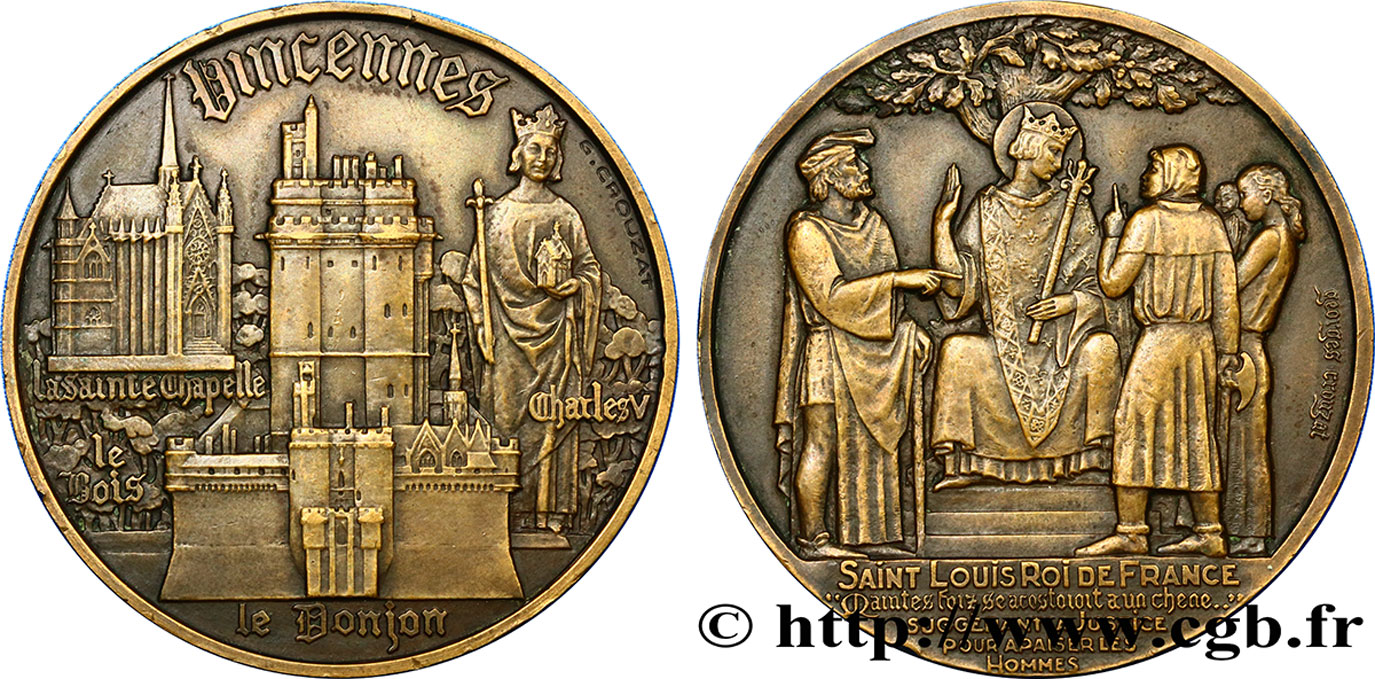
 Report a mistake
Report a mistake Print the page
Print the page Share my selection
Share my selection Ask a question
Ask a question Consign / sell
Consign / sell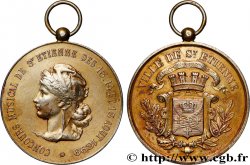
 Full data
Full data